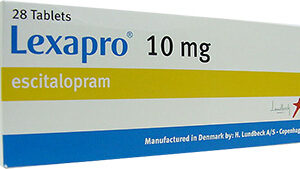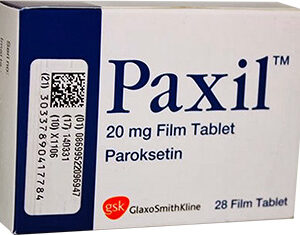Citalopram Overview
Citalopram, known by its trade name Celexa among others, is a selective serotonin reuptake inhibitor (SSRI) antidepressant. The medication functions by boosting the levels of serotonin, a neurotransmitter linked to mood regulation, in the brain.
Usage Indications
Citalopram is primarily prescribed for the treatment of major depressive disorder (MDD). It may also be used to manage conditions such as anxiety disorders, panic disorder, obsessive-compulsive disorder (OCD), premenstrual dysphoric disorder (PMDD), and post-traumatic stress disorder (PTSD), as off-label applications.
Administration and Dosage
The initial dose usually starts at 20 mg once daily, with a potential increase to a maximum of 40 mg per day, depending on the patient’s response and tolerability. Dosing should be personalized to the individual and may vary based on severity of symptoms and patient response. Citalopram is typically taken once daily, with or without food. For those who may be more sensitive to the medication, such as the elderly, a lower starting dose may be considered.
Contraindications
Citalopram is not recommended for patients with a known hypersensitivity to citalopram or any of its ingredients. It should not be used in conjunction with monoamine oxidase inhibitors (MAOIs) or within 14 days of discontinuing an MAOI treatment due to risk of serotonin syndrome. Additionally, the administration of citalopram is contraindicated with certain drugs that prolong the QT interval as it may lead to torsade de pointes.
Precautions
Prior to initiation of citalopram, screening for bipolar disorder is advisable given that antidepressants may induce mania. Caution is advised when prescribing to patients with a history of seizure disorders, or those at risk for QT prolongation. Hyponatremia may occur, so monitoring sodium levels in the elderly, those taking diuretics, and others prone to electrolyte imbalances is recommended. Use of citalopram is cautioned in patients with known cardiac disease, and regular monitoring is advised.
Adverse Effects
Like all medications, citalopram can lead to side effects. The most common include nausea, dry mouth, somnolence, insomnia, increased sweating, and sexual dysfunction. These are generally mild and diminish over time. Serious side effects include serotonin syndrome, QT prolongation, and suicide risk increase in individuals under 24 years of age. Monitoring for adverse reactions is crucial and any severe or persistent side effects should be reported to a healthcare provider.
Interactions
Citalopram has the potential to interact with several other drugs. Notable interactions occur with MAOIs, anticoagulants like warfarin, nonsteroidal anti-inflammatory drugs (NSAIDs), and other antidepressants. Concurrent use of citalopram with these agents can increase bleeding risks or, as previously mentioned, lead to serotonin syndrome. Careful monitoring and consultation with a healthcare provider is necessary when combining citalopram with other medications.
Specific Population Use
The need for careful use of citalopram extends to specific populations. During pregnancy, citalopram should only be used if the benefit justifies the potential fetal risk. Breastfeeding mothers should also be cautious as citalopram passes into breast milk. Geriatric patients may be more prone to the side effects of citalopram, particularly QT prolongation and sodium imbalance, hence lower initial doses may be more appropriate in this population.
Overdosage
An overdose of citalopram can be fatal and warrants immediate medical attention. Symptoms of toxicity may include nausea, tremor, dizziness, tachycardia, seizures, and potential cardiac disturbances like QT prolongation. Treatment is typically supportive and symptomatic, with careful monitoring of cardiac rhythm and vital signs. Gastric lavage and the administration of activated charcoal may be considered.
Clinical Pharmacokinetics
Upon ingestion, citalopram is adequately absorbed and reaches peak blood concentrations between 2-4 hours. The drug is extensively metabolized in the liver and exhibits a biphasic half-life, usually around 35 hours, allowing for once-daily dosing. The parent compound and metabolites are eliminated mainly via the kidneys.
Informing Patients
Patients should be informed about the nature and purpose of citalopram therapy, including its benefits and potential side effects. They should be advised to take the medication as prescribed and not to discontinue use abruptly without consulting a healthcare provider. The importance of not doubling up doses if a dose is missed and the potential for withdrawal symptoms upon cessation of use should also be communicated. Awareness of possible interactions with alcohol or other medications is vital.
Storage Guidelines
Citalopram should be stored at room temperature, away from light and moisture, and out of reach of children. It’s important to keep the medication in its original container and to dispose of any unused medication properly, following guidelines or consulting with a pharmacist.
Further Information
Individuals seeking more detail about citalopram can consult the medication guide or a healthcare provider for tailored advice. Additionally, updates or changes to drug information due to new research or guidelines can be obtained from reputable medical sources online.






Reviews
There are no reviews yet.